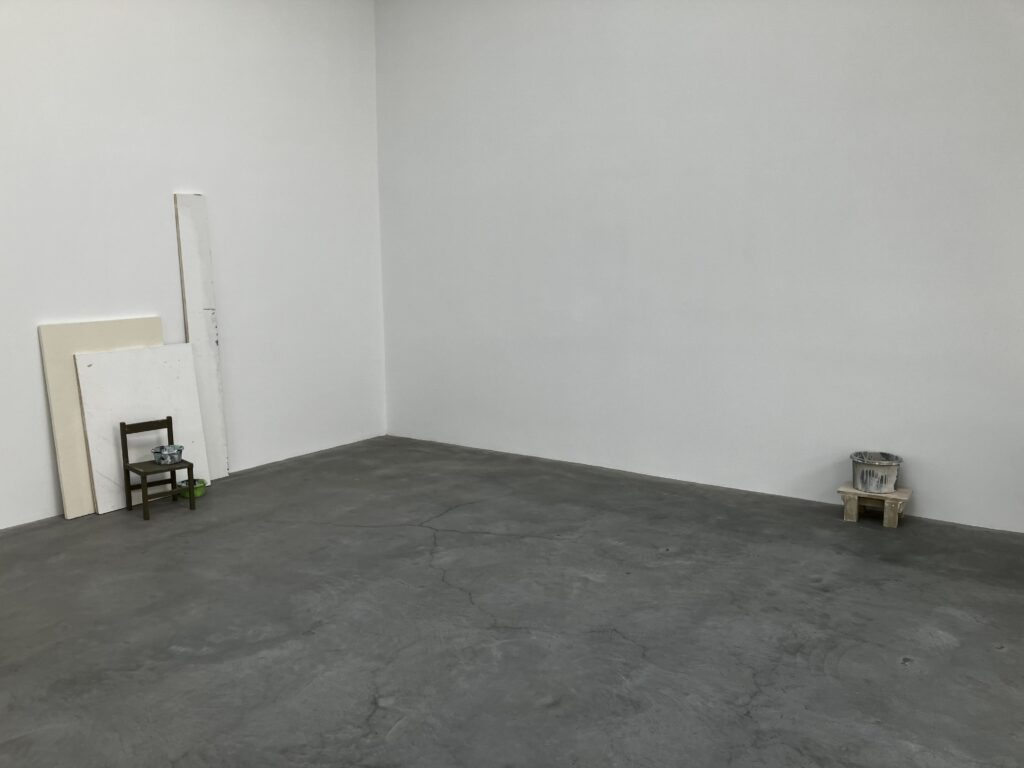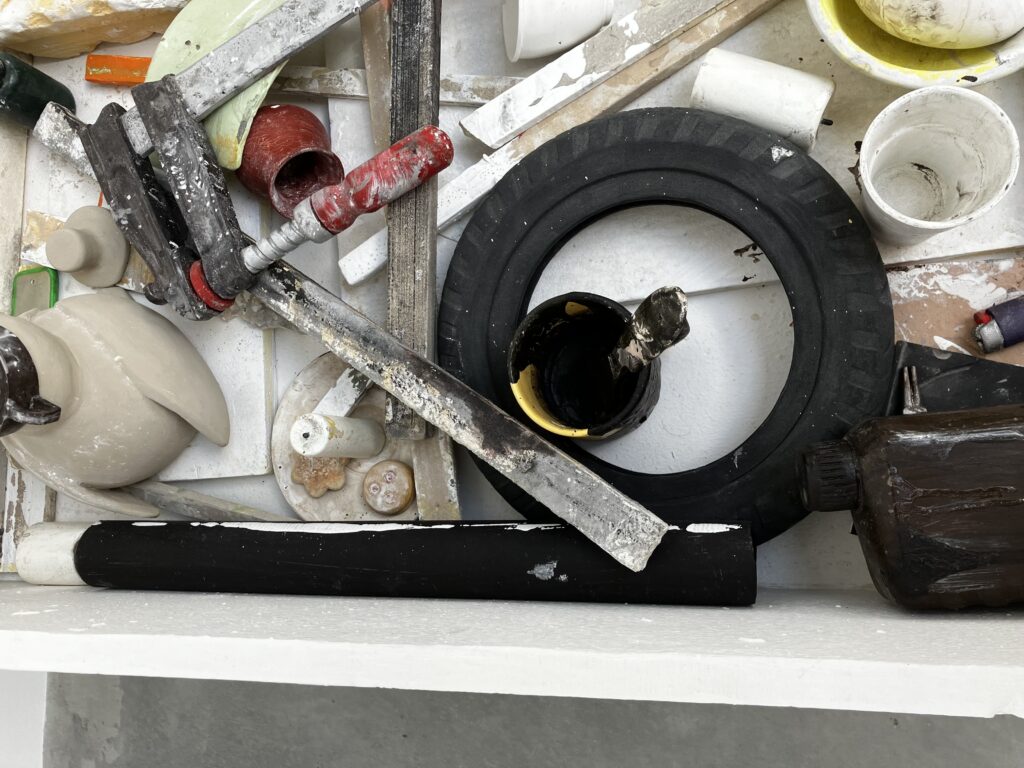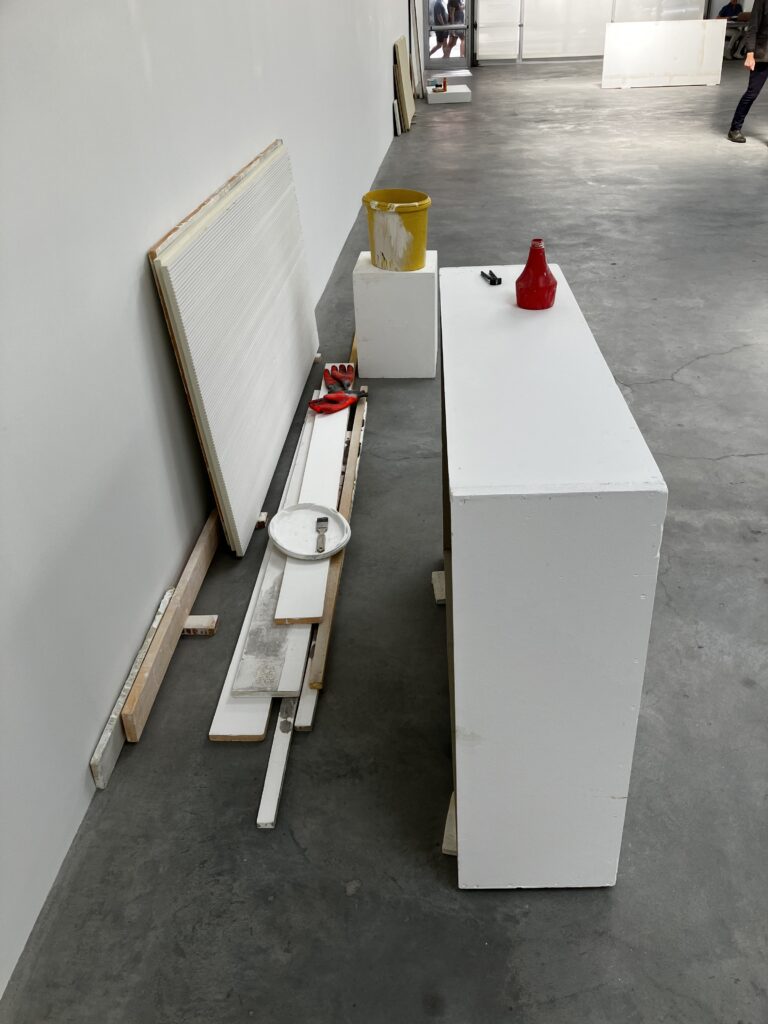
Walking into this elegant, airy and sky-lit Chelsea gallery, even as someone familiar with the work of the Swiss artist couple Peter Fischli (b. 1952) and David Weiss (1946–2012), momentary doubts take hold: Did I get the exhibition date wrong? Is the installation still in progress? It appears as though the dust is just settling while the handymen have stepped out to take their lunch hour, and will shortly be back to continue getting the gallery shipshape to properly display some majestic artworks. The room is filled with haphazard stacks of crates, planks, and pieces of wood in various sizes, well-used masonry tools, paint-dirty buckets, cleaning products, tubes and wire and rolls of tape, discarded cigarette butts and peanut shells. The viewer is almost uneasy, as though they inadvertently snuck into a mysteriously quiet and private backstage area—a pause in time before sweaty, noisy, preparatory work will resume.

But these fifteen separate untitled “groupings” of 288 objects are the show. The artists almost immediately succeed in placing the viewer in the middle of their key questions: How is art genuinely, physically made; who decides what art is; whose labor matters in the art world? Not a single object is functional as what it represents: all are carefully carved and painted replicas of their factory-made brethren, made out of polyurethane over more than two decades between 1993–2012 The perfection of the duplication requires close scrutiny and provokes a strong desire to touch. Each grouping, of between two to sixty-six objects, is entirely different to the next, but all depict the cheap detritus that is thoughtlessly consumed and shed in service of creation. In one work, two gloves and a disposable plate with a dirty paintbrush are balanced on long planks of wood, next to another stack of wood sheets, all leaned against the wall. An empty bookshelf stands nearby, upon which a wrench and an empty capless paint-streaked bottle are placed, as if carelessly left behind. A big yellow cement-mixing bucket, also caked with paint, on a pedestal completes the scene. In another composition, a drawer is filled with bric-a-brac, ironically carefully arranged to look realistically sloppy and disorganized.

The works are playful and witty, but also cunning and destabilizing: Why do you believe the things you do? What makes something genuine? What does it mean to focus the act of laborious artistic creation back on itself, ouroboros-like?
In considering the artistic journey from mere idea to final artwork, Fischli & Weiss have made process their entire destination. This is in contrast to many artists who take great pains to hide the effort —the brushstrokes—involved. It is sometimes said that an artist lives twice: once by experiencing life firsthand, and a second time by transmuting their experience into art to express their ideas across generations. Fischli and Weiss, however, know that for most artists, much of the living is done in a crammed studio, often in solitude, questioning, tinkering, building, endlessly refining, and most of all, simply toiling. And so they are indeed, in a twisted mise-en-abyme, faithfully transmuting their lived experience into art.
This exhibition was organized by Matthew Marks Gallery, where it was on view from September 13 to October 26, 2024.
Louise E. Decoppet is a New York City-based art historian, writer, and editor.